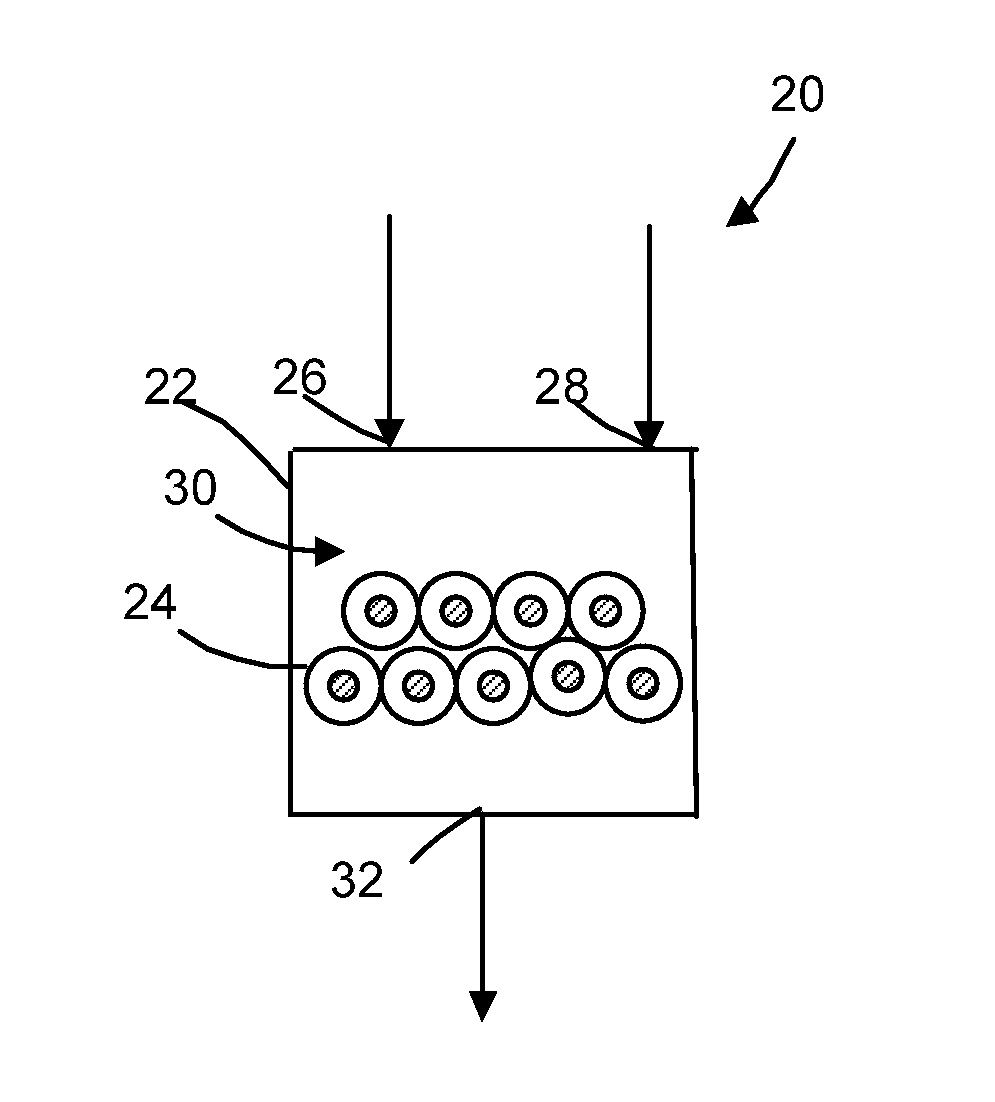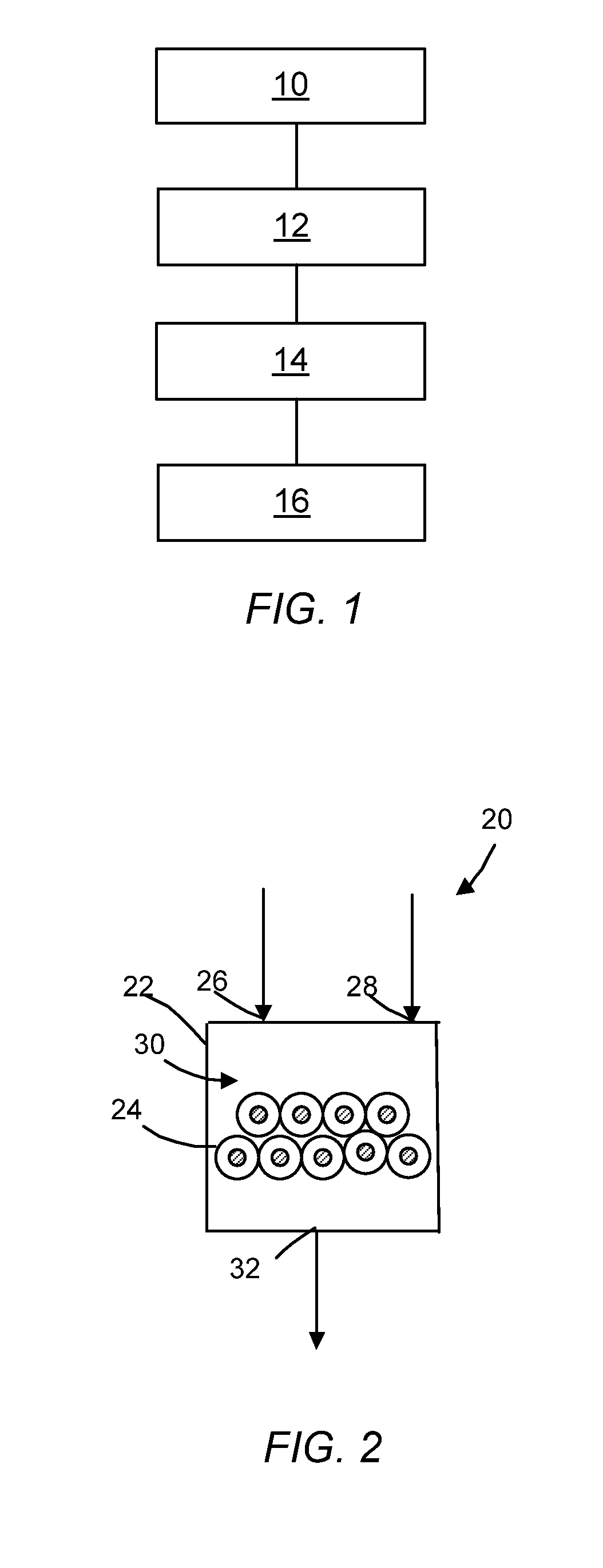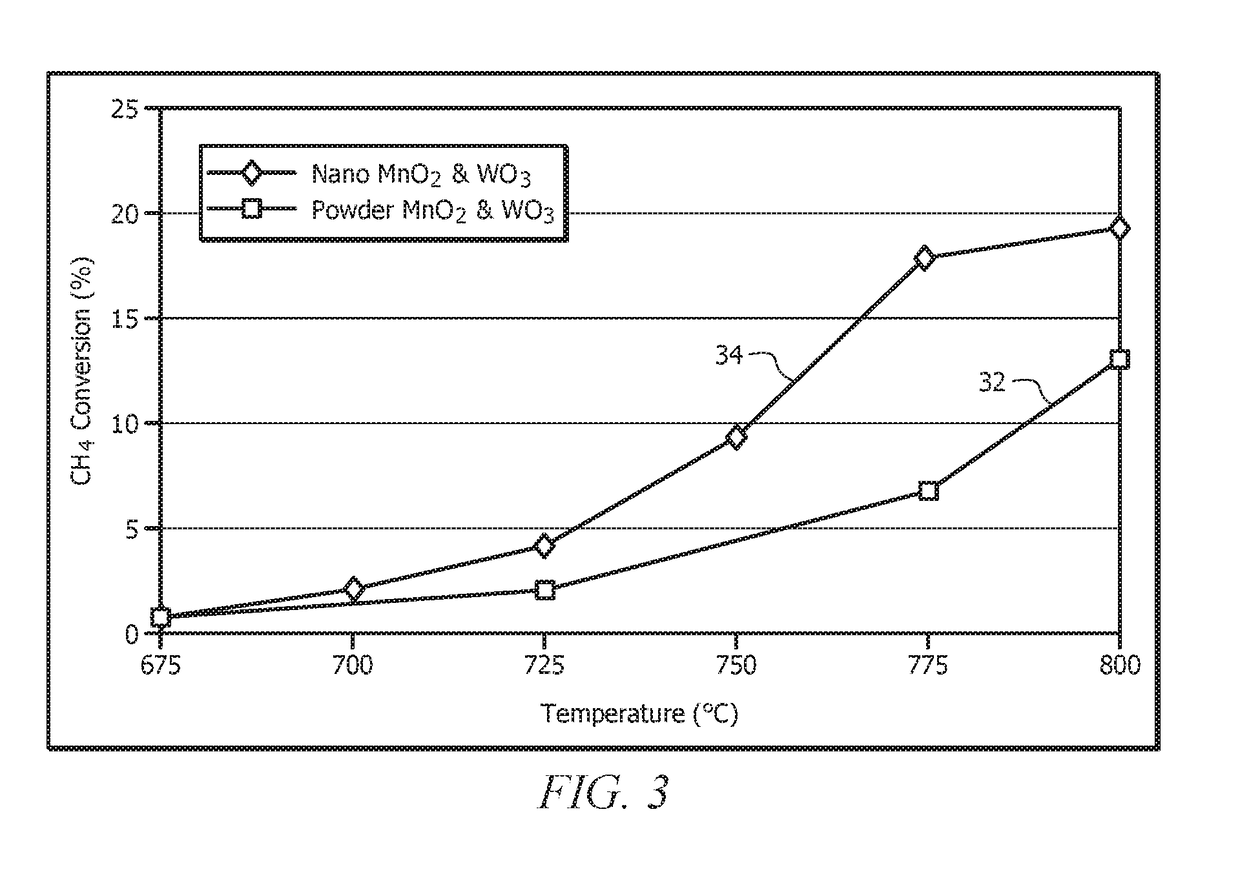Catalysts Prepared from Nanostructures of MnO2 and WO3 for Oxidative Coupling of Methane
a catalyst and nanostructure technology, applied in the field of catalyst preparation and use in the oxidative coupling of methane reaction, can solve the problems of uncontrolled heat excursions, limiting efficient utilization of natural gas, and increasing the temperature of the catalyst bed, so as to improve the conversion and selectivity of catalysts, reduce the cost of catalyst preparation, and improve the effect of catalyst conversion and selectivity
- Summary
- Abstract
- Description
- Claims
- Application Information
AI Technical Summary
Benefits of technology
Problems solved by technology
Method used
Image
Examples
example 2
Preparation of [MnNaW]On / SiO2 prepared with nano MnO2 / WO3
[0051]MnO2 wet cake (3.86 g, 10% MnO2, 10 nm×10 microns) wet cake was dispersed into deionized water (20 mL). The aqueous MnO2 mixture was added to a silica sol (29.35 g, silica content 34%). WO3 wet cake (2.92 g, 27% WO3, 20 nm×20 microns) was dispersed into deionized water (20 mL) and added to the MnO2 / silica sol mixture. Sodium nitrate (0.58 g, NaNO3) was dissolved in deionized water (10 mL) and added to the MnO2 / WO3 / silica sol mixture. The mixture was agitated for 2 hours at 80° C., and then dried at 120° C. for 12 hours to obtain a crystalline material. The crystalline material was calcined at 800° C. for 6 hours. The resulting catalyst was sized to a particle size of 35-50 mesh.
example 3
Preparation of [MnNaW]1On / SiO2 Prepared with Nano MnO2 / WO3 and Na2CO3
[0052]MnO2 wet cake (3.86 g, 10% MnO2, 10 nm×10 microns) wet cake was dispersed into deionized water (20 mL). The aqueous MnO2 mixture was added to a silica sol (29.35 g, silica content 34%). WO3 wet cake (2.92 g, 27% WO3, 20 nm×20 microns) was dispersed into deionized water (20 mL) and added to the MnO2 / silica sol mixture. Sodium carbonate (0.36 g, Na2CO3) was dissolved in deionized water (10 mL) and added to the MnO2 / WO3 / silica sol mixture. The mixture was agitated for 2 hours at 80° C., and then dried at 120° C. for 12 hours to obtain a crystalline material. The crystalline material was calcined at 800° C. for 6 hours. The resulting catalyst was sized to a particle size of 35-50 mesh.
example 4
Preparation of [MnNaW]On / SiO2 Prepared with Nano MnO2 / WO3 and NaCl
[0053]MnO2 wet cake (3.86 g, 10% MnO2, 10 nm×10 microns) wet cake was dispersed into deionized water (20 mL). The aqueous MnO2 mixture was added to a silica sol (29.35 g, silica content 34%). WO3 wet cake (2.92 g, 27% WO3, 20 nm×20 microns) was dispersed into deionized water (20 mL) and added to the MnO2 / silica sol mixture. Sodium chloride (0.40 g, NaCl) was dissolved in deionized water (10 mL) and added to the MnO2 / WO3 / silica sol mixture. The mixture was agitated for 2 hours at 80° C., and then dried at 120° C. for 12 hours to obtain a crystalline material. The crystalline material was calcined at 800° C. for 6 hours. The resulting catalyst was sized to a particle size of 35-50 mesh.
PUM
| Property | Measurement | Unit |
|---|---|---|
| temperature | aaaaa | aaaaa |
| temperature | aaaaa | aaaaa |
| temperature | aaaaa | aaaaa |
Abstract
Description
Claims
Application Information
 Login to View More
Login to View More - R&D
- Intellectual Property
- Life Sciences
- Materials
- Tech Scout
- Unparalleled Data Quality
- Higher Quality Content
- 60% Fewer Hallucinations
Browse by: Latest US Patents, China's latest patents, Technical Efficacy Thesaurus, Application Domain, Technology Topic, Popular Technical Reports.
© 2025 PatSnap. All rights reserved.Legal|Privacy policy|Modern Slavery Act Transparency Statement|Sitemap|About US| Contact US: help@patsnap.com



